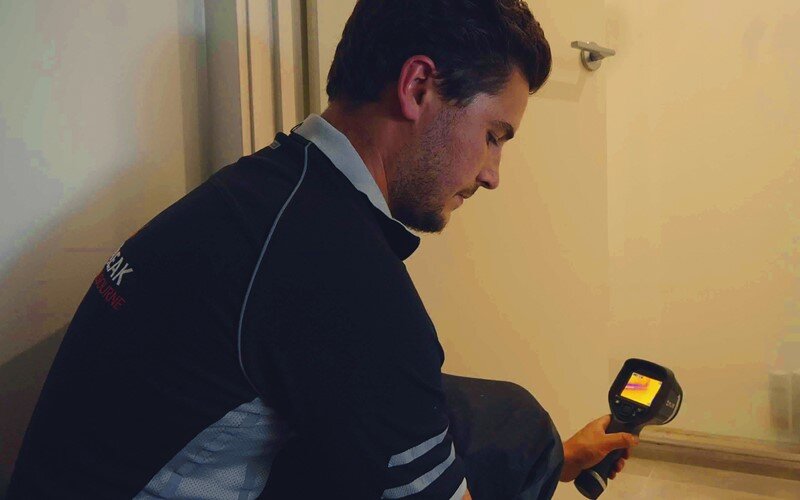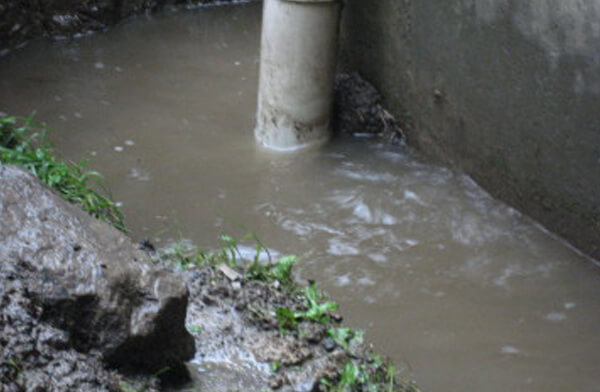They are making a few great points on Detecting hidden plumbing leaks in general in this great article down below.

Early discovery of leaking water lines can reduce a prospective disaster. Some little water leakages may not be noticeable.
1. Take A Look At the Water Meter
Every home has a water meter. Checking it is a proven way that helps you find leaks. For beginners, turn off all the water resources. Guarantee no person will flush, make use of the faucet, shower, run the cleaning device or dish washer. From there, go to the meter and also watch if it will certainly alter. Given that no one is using it, there need to be no movements. If it relocates, that shows a fast-moving leak. Likewise, if you discover no changes, wait a hr or 2 and also examine back again. This implies you may have a slow leak that could also be below ground.
2. Check Water Intake
If you detect sudden modifications, regardless of your intake being the same, it implies that you have leaks in your plumbing system. An unexpected spike in your costs shows a fast-moving leakage.
Meanwhile, a consistent boost each month, even with the same practices, shows you have a slow leakage that's additionally gradually intensifying. Call a plumber to completely check your residential property, particularly if you really feel a warm location on your floor with piping underneath.
3. Do a Food Coloring Examination
When it comes to water consumption, 30% comes from bathrooms. If the color somehow infiltrates your bowl during that time without flushing, there's a leak between the tank and bowl.
4. Asses Outside Lines
Don't fail to remember to examine your outside water lines as well. Needs to water seep out of the connection, you have a loose rubber gasket. One small leakage can throw away loads of water as well as increase your water costs.
5. Evaluate and Examine the Scenario
Home owners need to make it a behavior to inspect under the sink counters as well as even inside cabinets for any kind of bad odor or mold and mildew growth. These two red flags indicate a leakage so timely attention is called for. Doing regular assessments, even bi-annually, can conserve you from a major trouble.
If you understand your residence is already old, maintain a careful eye on your heating units, tubes, pipes etc. Look for discolorations as well as damaging as many home appliances as well as pipelines have a life expectancy. They will additionally normally wear away as a result of damage. If you believe dripping water lines in your plumbing system, do not await it to rise. Call a specialist plumber right now so you don't end up with a terrible mess in your home.
Early detection of dripping water lines can minimize a prospective calamity. Some small water leakages may not be noticeable. Checking it is a proven way that assists you uncover leaks. One small leakage can squander heaps of water and increase your water bill.
If you think dripping water lines in your plumbing system, do not wait for it to escalate.
WARNING SIGNS OF WATER LEAKAGE BEHIND THE WALL
PERSISTENT MUSTY ODORS
As water slowly drips from a leaky pipe inside the wall, flooring and sheetrock stay damp and develop an odor similar to wet cardboard. It generates a musty smell that can help you find hidden leaks.
MOLD IN UNUSUAL AREAS
Mold usually grows in wet areas like kitchens, baths and laundry rooms. If you spot the stuff on walls or baseboards in other rooms of the house, it’s a good indicator of undetected water leaks.
STAINS THAT GROW
When mold thrives around a leaky pipe, it sometimes takes hold on the inside surface of the affected wall. A growing stain on otherwise clean sheetrock is often your sign of a hidden plumbing problem.
PEELING OR BUBBLING WALLPAPER / PAINT
This clue is easy to miss in rooms that don’t get much use. When you see wallpaper separating along seams or paint bubbling or flaking off the wall, blame sheetrock that stays wet because of an undetected leak.
BUCKLED CEILINGS AND STAINED FLOORS
If ceilings or floors in bathrooms, kitchens or laundry areas develop structural problems, don’t rule out constant damp inside the walls. Wet sheetrock can affect adjacent framing, flooring and ceilings.
https://www.servicemasterbyzaba.com/blog/how-to-detect-water-leakage-in-walls/

I am very serious about Detecting hidden plumbing leaks and I'm hoping you enjoyed my blog posting. Be sure to take the opportunity to distribute this write-up if you appreciated it. Thanks a bunch for your time. Visit again soon.